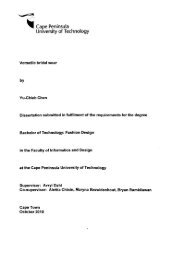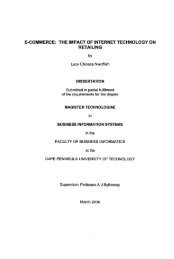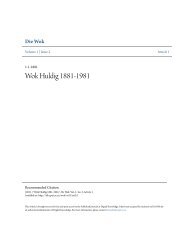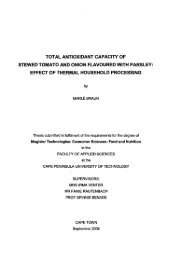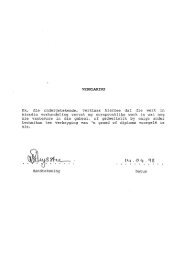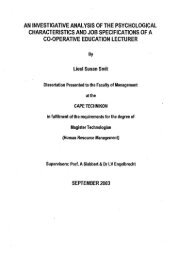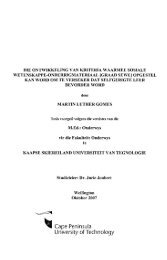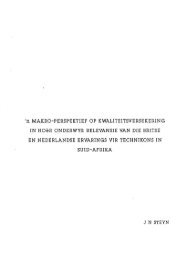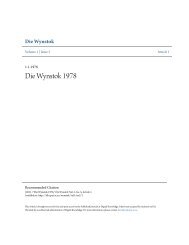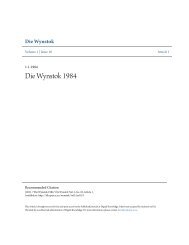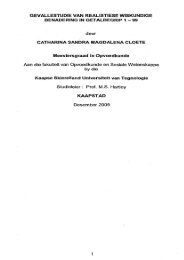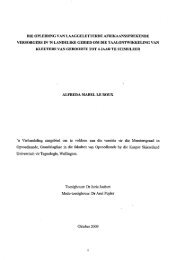the effect of the particle size distribution on non-newtonian turbulent ...
the effect of the particle size distribution on non-newtonian turbulent ...
the effect of the particle size distribution on non-newtonian turbulent ...
Create successful ePaper yourself
Turn your PDF publications into a flip-book with our unique Google optimized e-Paper software.
Chapter 2 Literature Review Page 2.21<br />
I{ =<br />
4 log(Re If) - 0,4 .<br />
(2.30)<br />
Even though this equati<strong>on</strong> was proposed for a much wider range <str<strong>on</strong>g>of</str<strong>on</strong>g> Reynolds numbers, <str<strong>on</strong>g>the</str<strong>on</strong>g><br />
Reynolds numbers <str<strong>on</strong>g>of</str<strong>on</strong>g> <str<strong>on</strong>g>the</str<strong>on</strong>g> vast majority <str<strong>on</strong>g>of</str<strong>on</strong>g>n<strong>on</strong>-Newt<strong>on</strong>ian fluids rarely exceeds 100 000 due<br />
to <str<strong>on</strong>g>the</str<strong>on</strong>g> viscous nature <str<strong>on</strong>g>of</str<strong>on</strong>g> <str<strong>on</strong>g>the</str<strong>on</strong>g>se fluids.<br />
However, even though <str<strong>on</strong>g>the</str<strong>on</strong>g> simple Blasius type equati<strong>on</strong>s can be used, most <str<strong>on</strong>g>of</str<strong>on</strong>g> <str<strong>on</strong>g>the</str<strong>on</strong>g> work to<br />
develop semi-<str<strong>on</strong>g>the</str<strong>on</strong>g>oretical models for <strong>turbulent</strong> flow <str<strong>on</strong>g>of</str<strong>on</strong>g> Newt<strong>on</strong>ian fluids in pipes has centred<br />
around <str<strong>on</strong>g>the</str<strong>on</strong>g> mixing length model <str<strong>on</strong>g>of</str<strong>on</strong>g> Prandtl (1926).<br />
0.01<br />
0.00 1-f---r--r-;..-rrTT.,,---.----.T"T"T"TTTT--r-r.....,...,....,.-T"TTi<br />
1000 10000 100000 1000000<br />
Reynolds Number (Re)<br />
Figure 2.9: Graphical comparis<strong>on</strong> <str<strong>on</strong>g>of</str<strong>on</strong>g> Blasius, Knudsen & Katz and v<strong>on</strong><br />
Karmen fricti<strong>on</strong> factor equati<strong>on</strong>s for <strong>turbulent</strong> flow<br />
2.9.5 Smooth Wall Turbulence<br />
In <strong>turbulent</strong> flow, <str<strong>on</strong>g>the</str<strong>on</strong>g> interchange <str<strong>on</strong>g>of</str<strong>on</strong>g>momentum between layers, due to eddy formati<strong>on</strong>, sets<br />
up shear stresses, also koown as Reynolds stresses (Schlichting, 1968). The shear stress in<br />
<str<strong>on</strong>g>the</str<strong>on</strong>g> <strong>turbulent</strong> core must be related to <str<strong>on</strong>g>the</str<strong>on</strong>g> shear rate in order to obtain <str<strong>on</strong>g>the</str<strong>on</strong>g> velocity <str<strong>on</strong>g>distributi<strong>on</strong></str<strong>on</strong>g><br />
and flow rate (Janna, 1983).



